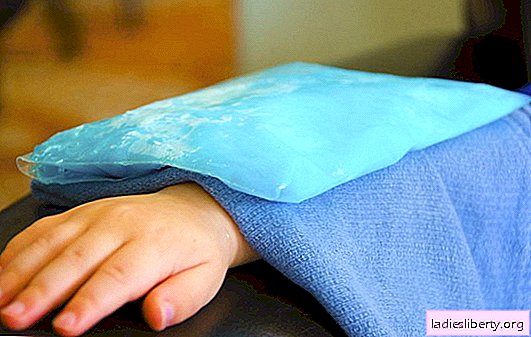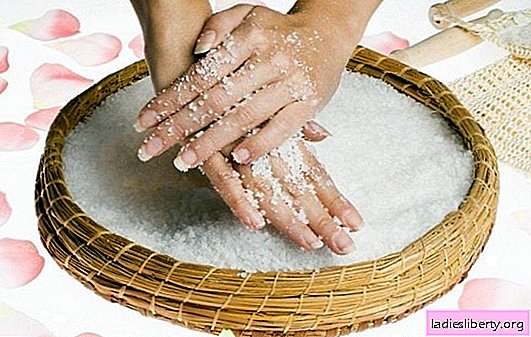
Bruises and fractures are the most common types of injuries.
This problem becomes especially urgent in the winter, the number of falls that do not always end without consequences increases.
You can hit, fall at home, in the gym, in nature.
An experienced doctor is not always nearby, which will provide first aid for bruises and fractures.
In most cases, you have to take measures yourself before the ambulance arrives.
Therefore, everyone should know the basic rules of first aid for bruises and fractures.
First aid for bruises and fractures: how to recognize damage
It is customary to call soft tissue damage a bruise; skin integrity, as a rule, is not broken. On impact, injury occurs to cells, blood vessels, nerves.
The main symptoms are:
• Pain at the site of the bruise.
• Edema of the affected area, its increase in size.
• Bruise (hematoma). It should be borne in mind that a bruise does not always occur at the site of damage, in some cases it appears elsewhere. For example, a fracture of the base of the skull is accompanied by a bluish area around the eyes.
• Impairment of motor function. If a joint has been injured, its mobility is limited.
Sometimes it is very difficult for an inexperienced person to draw a line between a bruise and a fracture. Even a small injury can lead to a violation of the integrity of the bone. To avoid complications, the doctor should examine the site of the injury. If you do not attach importance to the injury, try to treat it yourself, the consequences can be serious: improper bone fusion, infection of the wound.
To exclude a fracture, one should pay attention to some of its features:
• The limb appears to be shortened due to the displacement of the fragments.
• She occupies an unnatural position, turned in the opposite direction, bent.
• At the fracture site, pathological mobility is observed.
• When probing the site of damage, a crunch occurs (crepitus).
• Additional symptoms include pain, redness, swelling, and limitation of function. With an open fracture, there may be bleeding, bone fragments bulging out, as the skin is damaged.
Where to start with first aid for bruises and fractures
It is very important in such a situation not to get confused and perform all the necessary actions. If a person fell, slipped, it is necessary to approach, offer to help. The first step is to find out which part of the body is injured, in parallel you need to call an ambulance. If you hit your head, a doctor’s examination is required.
It must be remembered that the absence of symptoms does not always indicate slight damage. In some cases, after the so-called "bright gap" (the period without complaints), a sharp deterioration occurs. The doctor should check the basic reflexes, the reaction of the pupils to light, and other symptoms that indicate brain damage.
It is advisable to exclude a bone fracture, because first aid in this case will be slightly different. To do this, you need to evaluate the motor function of the limb, its size, shape, position.
How to provide first aid for bruises and fractures: basic rules
In case of a bruise, vascular damage occurs, blood leaves the vascular bed, impregnates soft tissues, and a hematoma (bruise) forms. To reduce pain, swelling, it is necessary:
• Apply cold to the site of injury. Ideally, if it is a special sterile ice pack that is sold in a pharmacy. But at home, you can also provide first aid for bruises and fractures. Ice cubes wrapped in a handkerchief, a napkin, a towel soaked in cold water, and ice are all that is at hand. Low temperature leads to spasm of blood vessels, their lumen decreases, bleeding stops.
• Remember! During the first day you can not use hot heating pads, warm baths, compresses. This will only intensify the pain, the hematoma will increase.
• If the joint is damaged, it is recommended to apply a tight bandage. Thus, we will protect him from unnecessary movements, excessive load.
• If the bruise is accompanied by scratches, it is necessary to treat the surface with an antiseptic. In a home medicine cabinet should be hydrogen peroxide, brilliant green, alcohol. Then a gauze bandage is applied.
What is the danger of injury?
After first aid for bruises and fractures is provided, it is necessary to consult a doctor to rule out complications.
• A contusion of the abdomen can be accompanied by trauma to the internal organs: rupture of the liver, spleen, bleeding. In this case, the patient will be pale, sweating will intensify, the pulse will increase, and the pressure, on the contrary, will decrease.
• Even slight scratches, skin damage are the entrance gate to many infections. The doctor will treat the wound, decide on the need for tetanus vaccine, antibiotics.
• Head injury carries a serious danger in the presence of nausea, vomiting, loss of consciousness, memory.
• If a blow was delivered to the chest area, heart failure, difficulty breathing may occur.
• Bruising of the spine often leads to impaired sensory and motor function in the pelvis and limbs.
How to provide first aid for fractures?
Fracture is a violation of the integrity of the bone, which is accompanied by severe pain and limitation of motor function. The main task is to provide immobility of the limb.
Often during fractures, parts of the body become unnatural. They are turned in the opposite direction, excessively bent or bent.
Remember! In no case should you independently try to return the limb to its normal position. You can only worsen the condition: transfer the fracture from closed to open, damage the bundle of nerves and blood vessels.
• If the fracture is open (there is damage to the skin), bleeding should be stopped by applying a tourniquet or tight bandage.
• An important point is the immobilization (immobilization) of a limb. There are special tires for this. At home, for first aid for bruises and fractures, use boards, sticks, an umbrella, skis. The main thing is that the subject should be solid and long enough.
• A homemade tire should be wrapped with gauze, cloth, so as not to injure the skin. In the areas of the bends you need to put rollers, cotton pads.
• In case of a fracture of small bones, 2 nearby joints are fixed; the femur and humerus require immobilization of 3 neighboring joints.
• If there are no materials at all, there is a method called foot to foot. The injured limb is bandaged to a healthy one, which also serves as a tire.
• Prior to the arrival of an ambulance, taking medications on your own is not recommended.
First aid for bruises and fractures: what you should not do
By their actions, you can not only help the patient, but also cause harm, worsen the condition. How to provide first aid for fractures and bruises correctly? It must be taken into account that the following measures are contraindicated.
• There is an opinion that with bruises, fractures, it is necessary to take an aspirin tablet to thin the blood. This will prevent blood clots. But this can not be done, since the drug increases bleeding. This remedy can only be prescribed by a doctor for strict indications.
• If the skin is not damaged, treat it with alcohol, iodine is not necessary.
• Heat compresses on the first day after an injury are contraindicated, vasodilation will only increase edema, hemorrhage.
• Prior to the arrival of an ambulance, it is better not to drink painkillers, this can make diagnosis difficult.
• It is strictly forbidden to open hematomas. This will lead to infection of the wound. It is recommended that you simply cover the surface with a clean dressing. Only a doctor in sterile conditions using special tools can perform this procedure.
First aid for fractures and bruises of various parts of the body
Each part of the body has its own natural position, so there are some features of first aid for fractures and bruises.
• Skull. The main symptoms that make it possible to suspect a fracture of the skull are bruises around the eyes, nosebleeds, loss of consciousness, nausea, and vomiting. An important role is also played by the fact of a header. The patient should be placed on a hard, even surface. To fix the head, using the rolls of towels on the sides, apply a heating pad with ice to the affected area.
• The spine. Transporting a person is recommended on the stomach. Do not make sudden movements so as not to damage the spinal cord. A sharp back pain, limitation of mobility will help to suspect this injury.
• Clavicle. Concerned about pain, swelling, inability to move in the shoulder joint. First aid for a bruise or fracture of the clavicle consists in fixing the hand on the side of the lesion. It is necessary to put a roller in the armpit, bend the arm in the elbow joint, and press the palm of the hand to the chest. In this state, bandage the limb to the body.
• In case of fractures of the limbs, establish a tire, fix with a bandage.
• Hands. The tire or an object replacing it is adjusted from the tips of the fingers to the elbow. Vata, a bandage should be placed in the palm so that the brush remains bent.
• Ribs. The patient will complain of pain when breathing, sneezing, coughing. It is necessary to apply a tight bandage on the chest. But overdoing is also not necessary. Fragmented ribs during compression can damage the lungs, causing pneumothorax.
• Taz. The main point in first aid for fracture or contusion of the pelvis is the correct position. A person is laid on his back on a flat, solid surface. The knees are bent and slightly apart to the sides, a roller is placed under them. In this position, the load on the pelvic bones is minimal, the risk of displacement of the fragments is also small.
Features of further treatment
If the bruise does not require serious treatment, the risk of complications is minimal, the doctor lets the patient go home, after giving recommendations. Restoring normal function - a long process, pain, as a rule, goes away after 2-3 days. But there are unpleasant sensations when loading on a damaged stav or limb.
To relieve pain, you can take analgin, keterol. Non-steroidal anti-inflammatory drugs have proven themselves well. They remove pain, reduce swelling, redness. The drugs of this group include diclofenac (voltaren), ibuprofen, keterol.
Unlike the first day, after the second day you can use dry heat, warming ointments (finalgon, fastum gel, capsicum). The doctor will help you choose the right drug, the right dosage.











